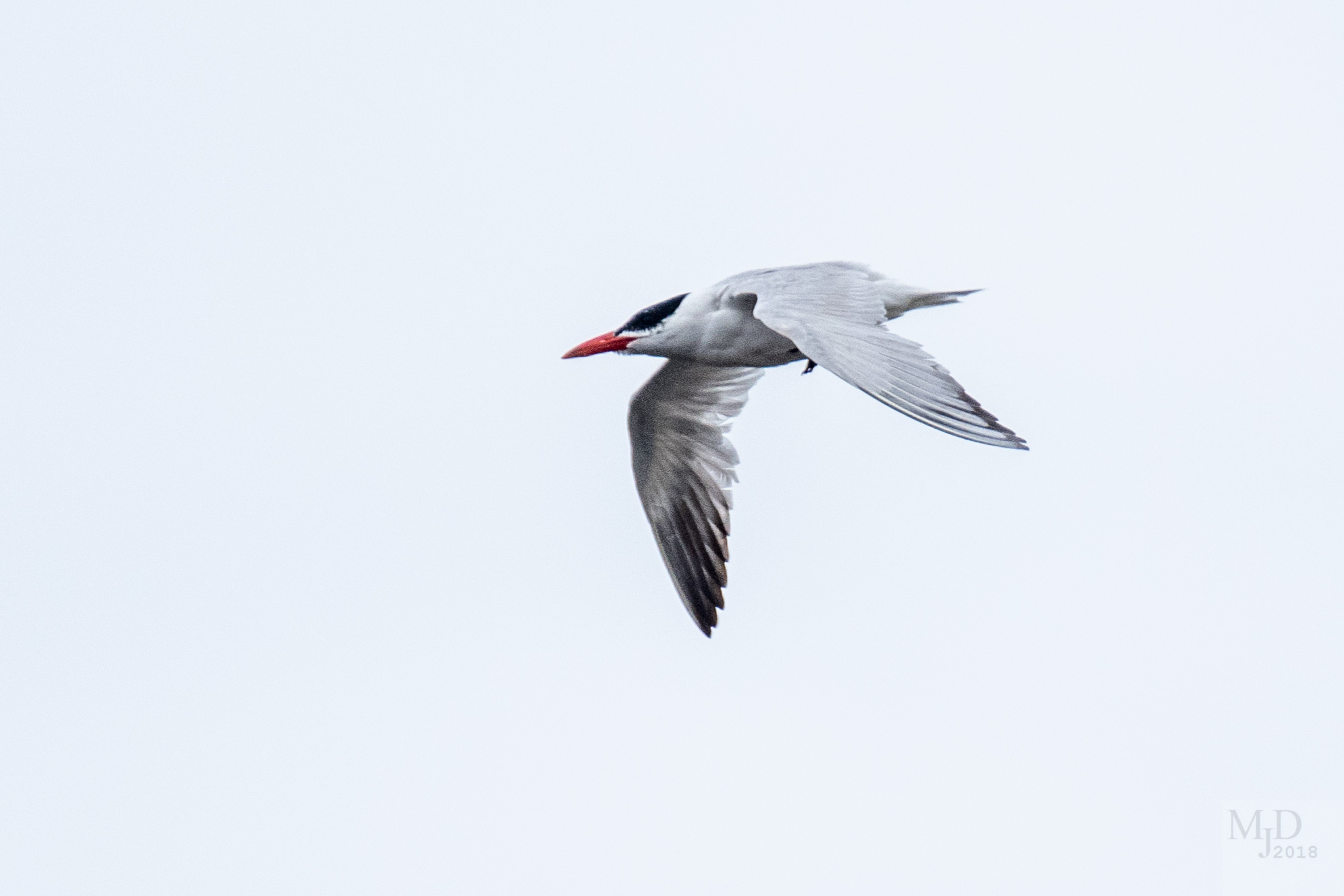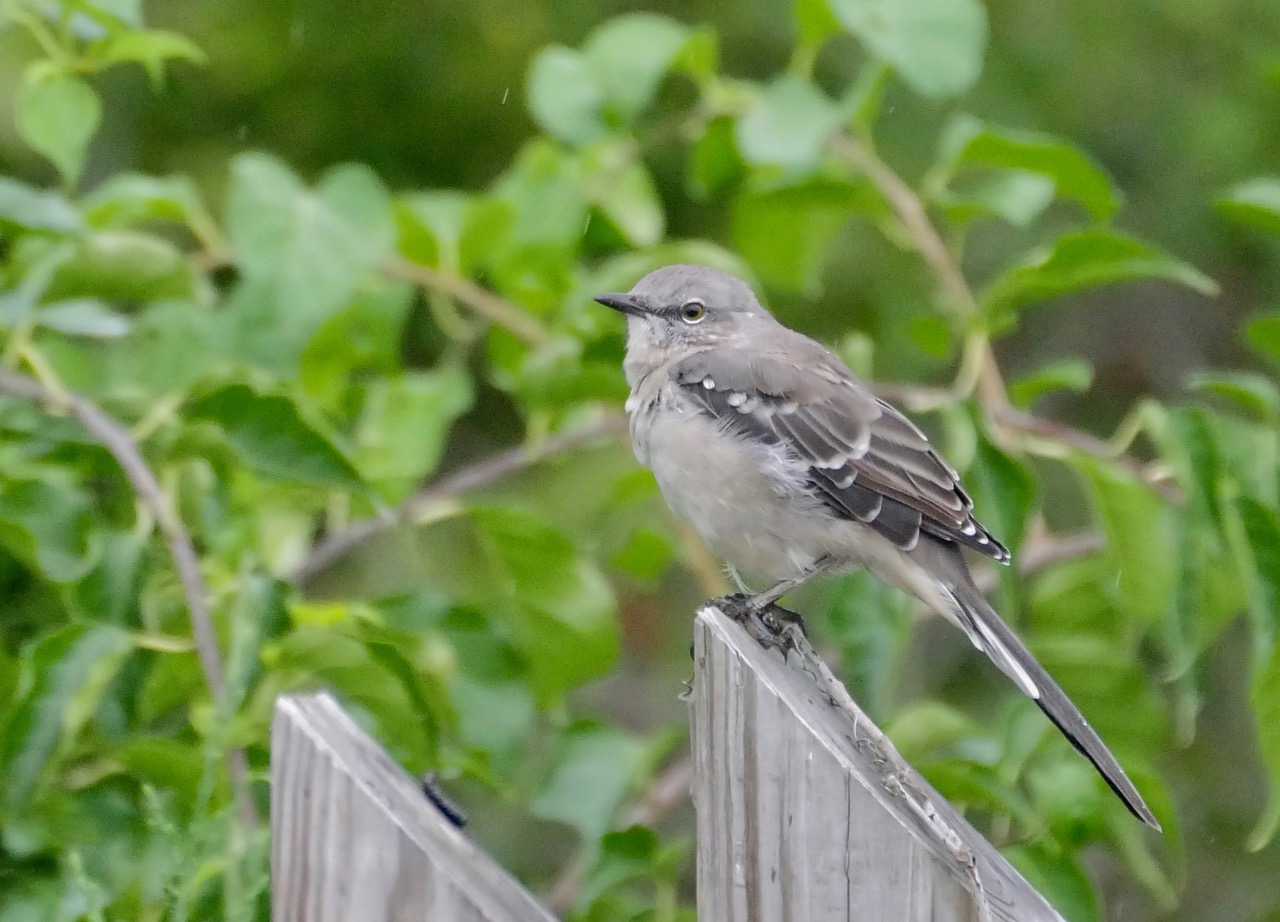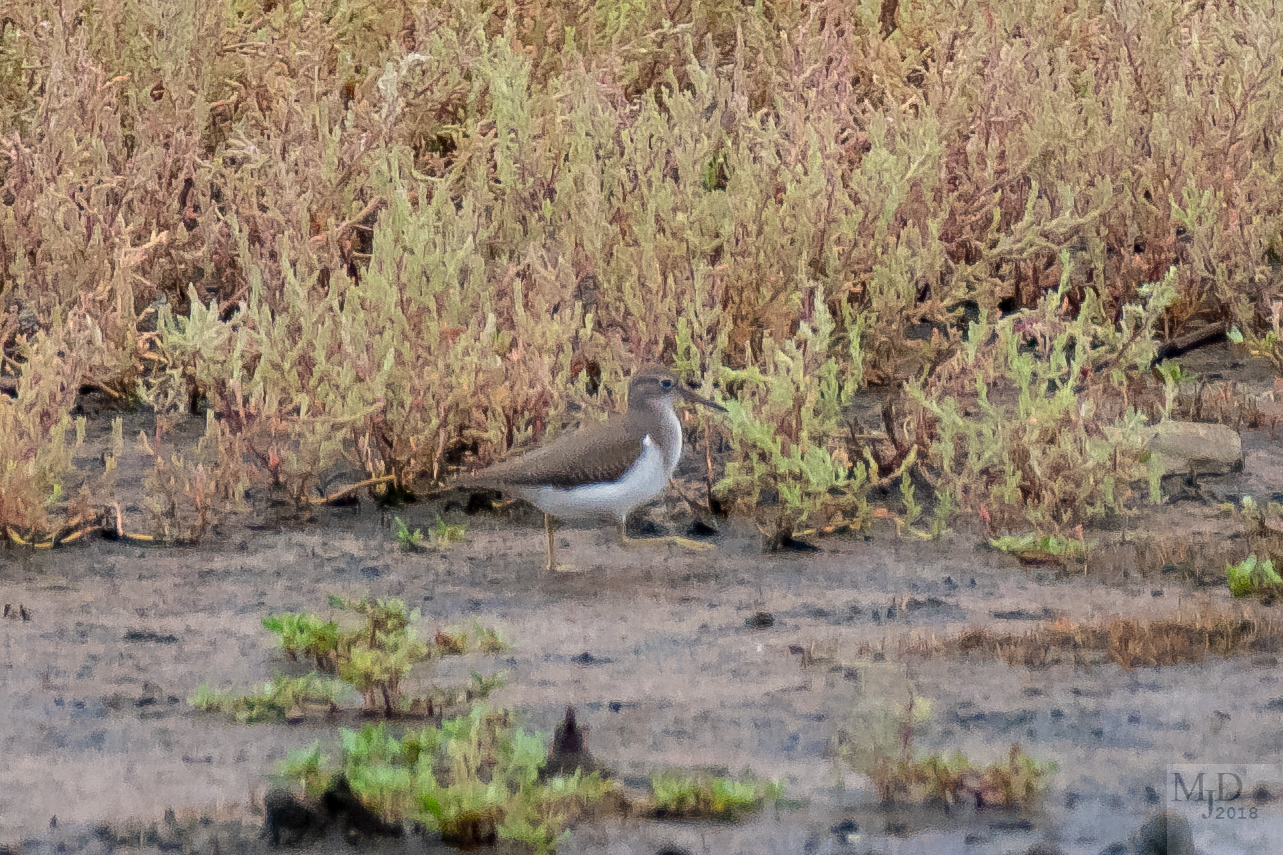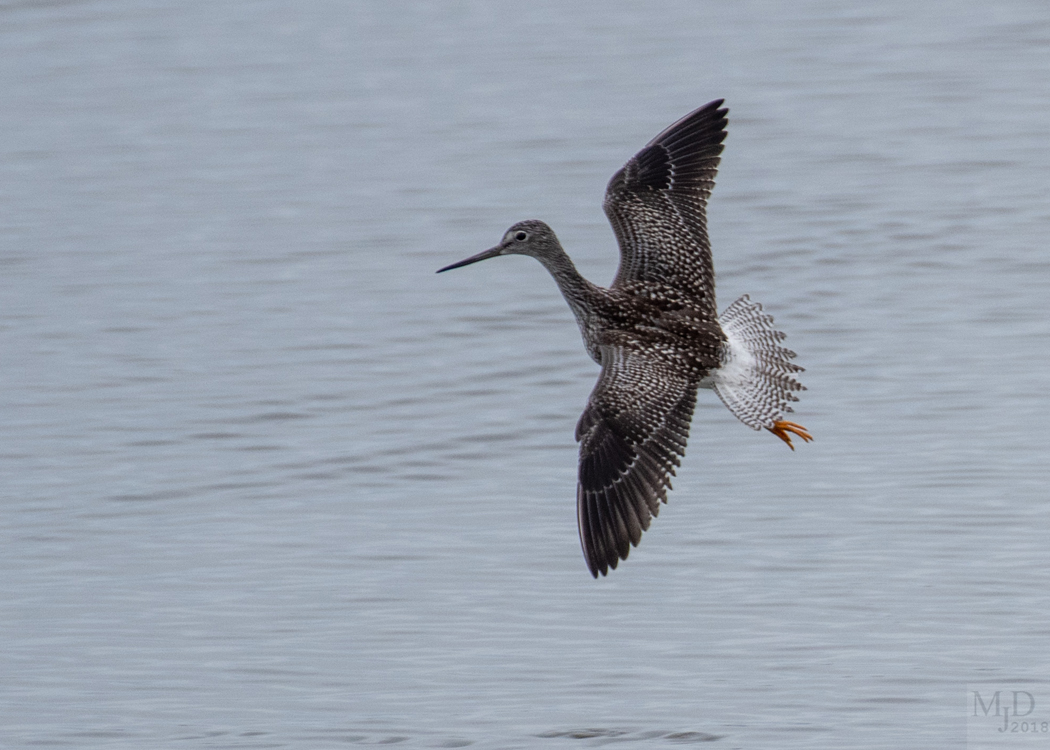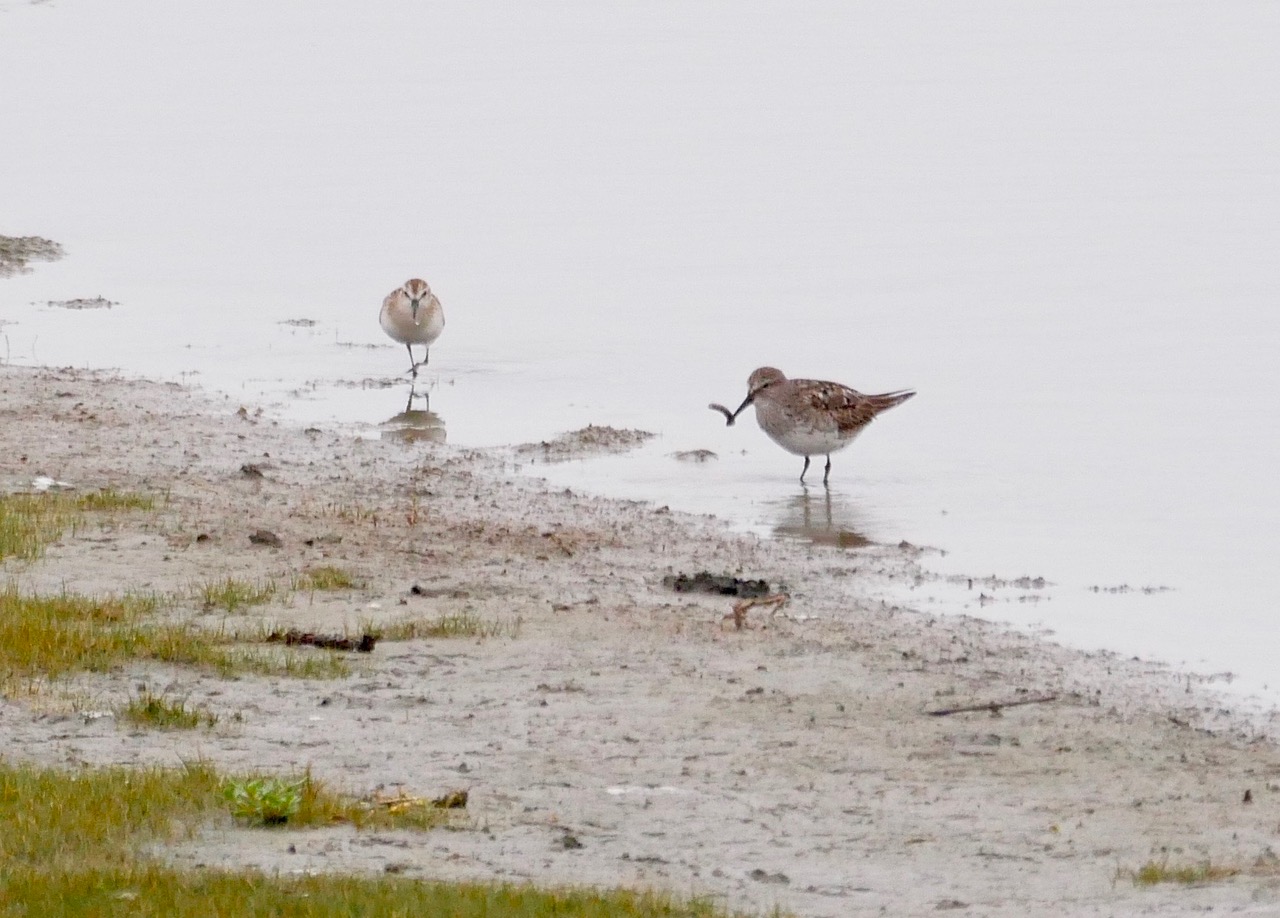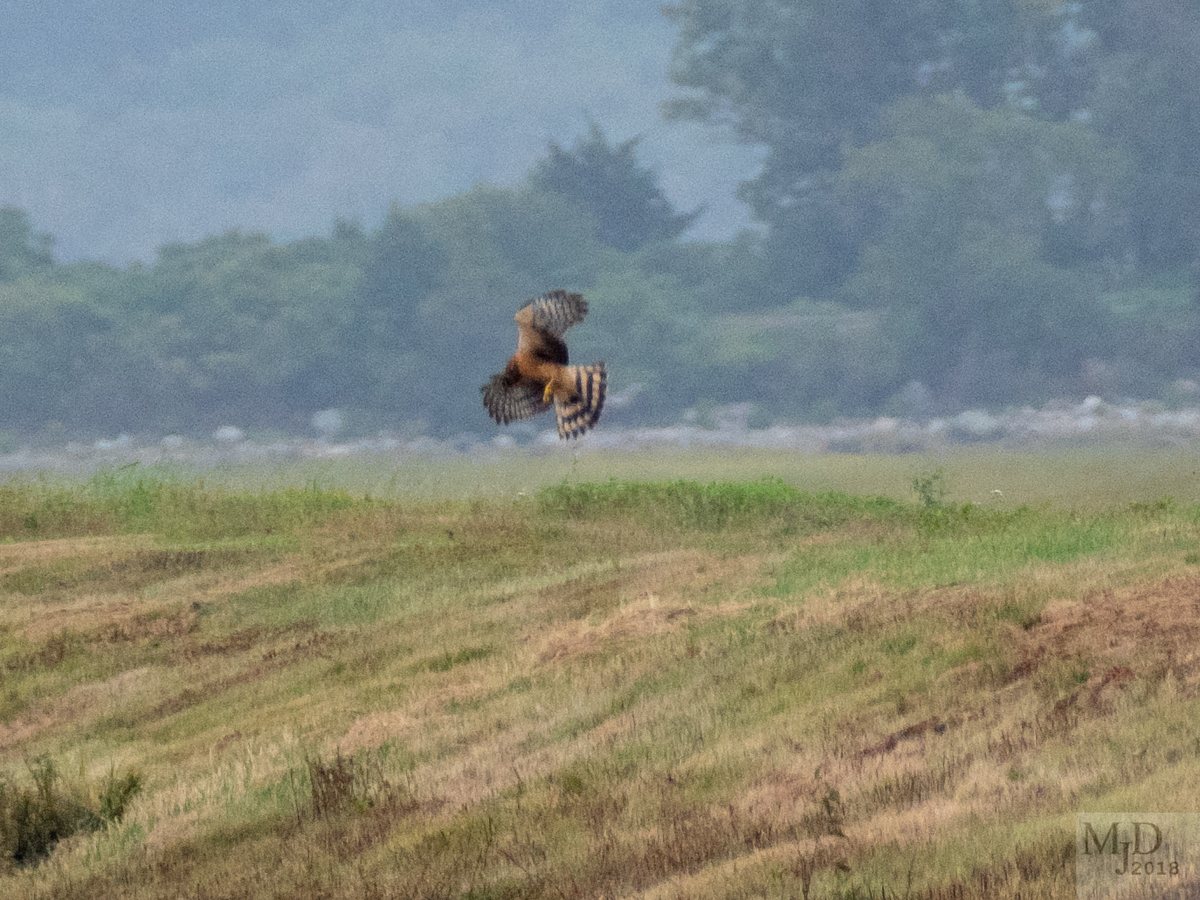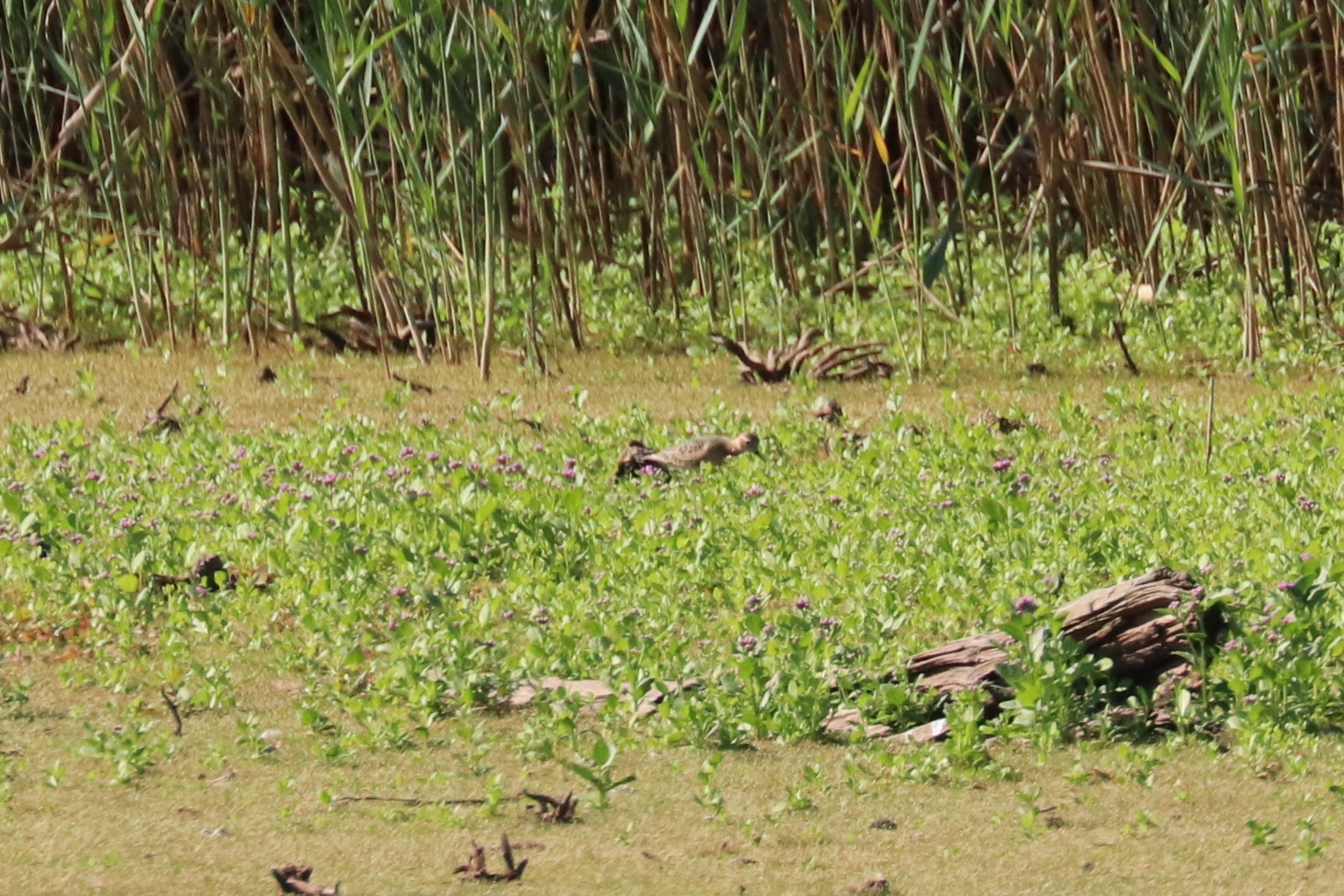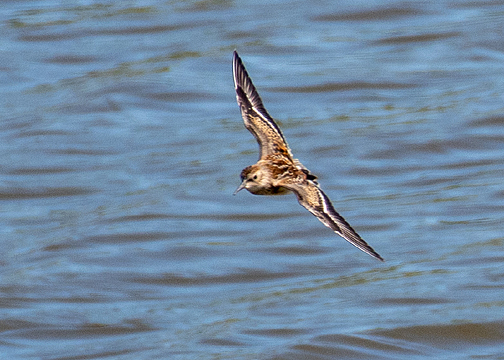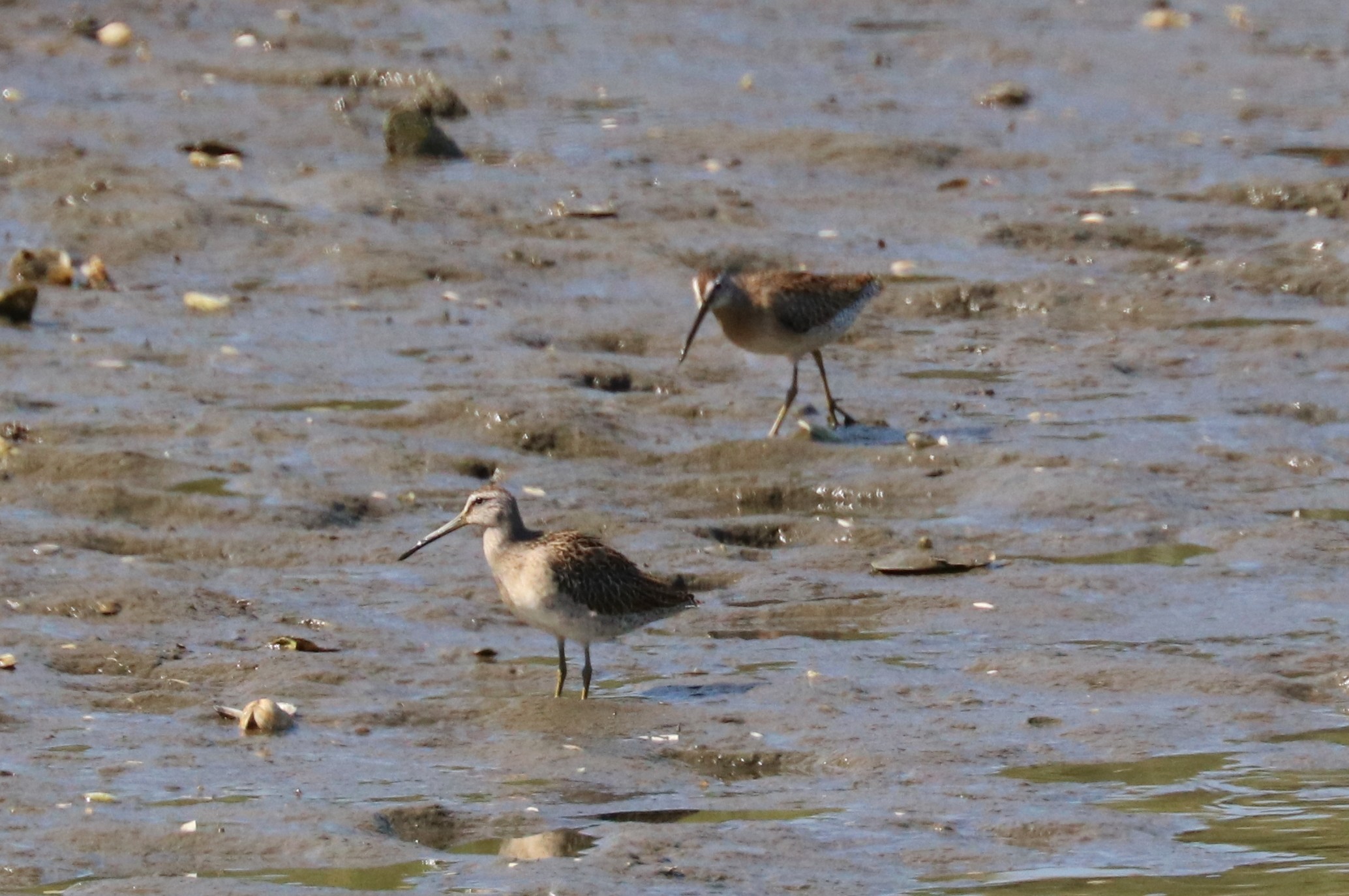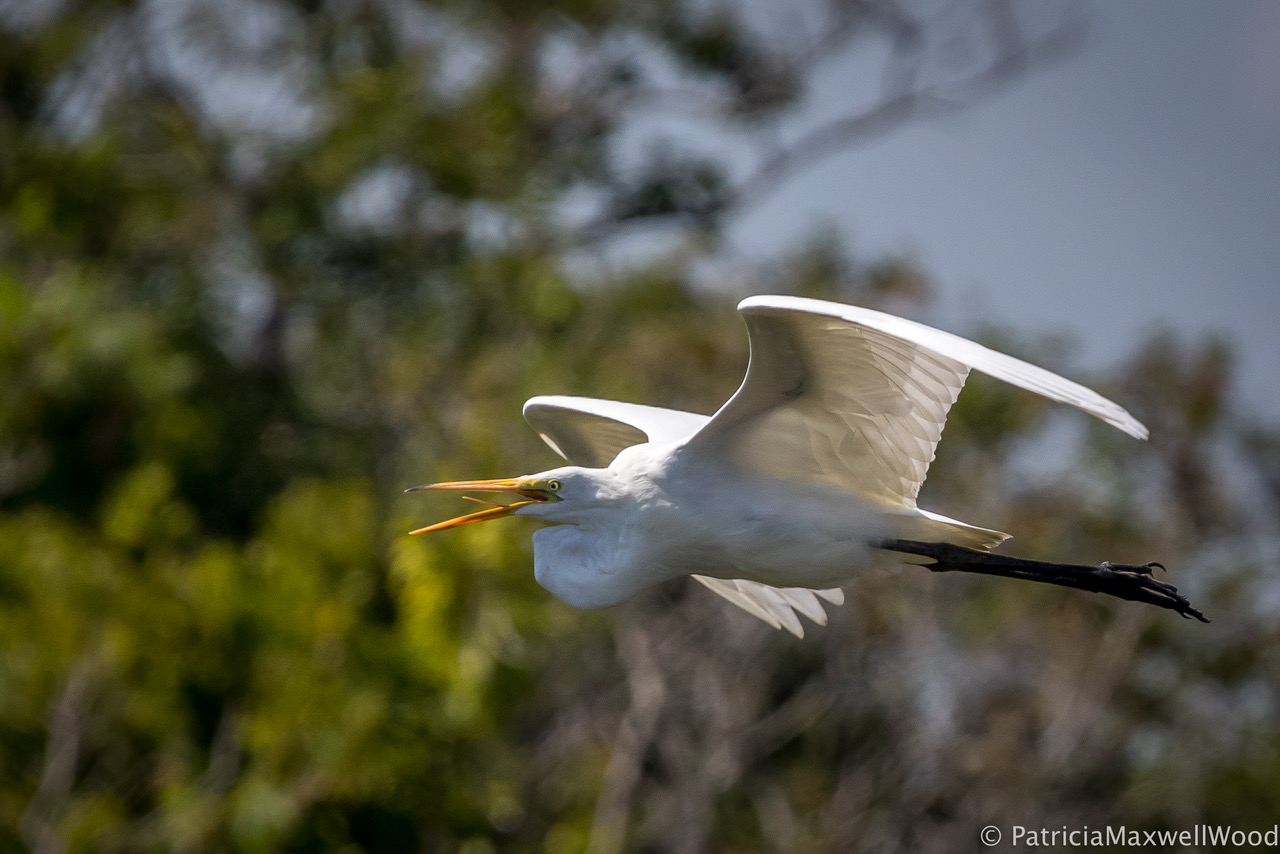This Wednesday, Dave Weaver and I found cool, gray, blustery conditions that may have led to a lower than usual turnout of our Wednesday Morning Birding regulars. We had a good number of new folks, however, who were up for anything we might find. To take advantage of a high but falling tide, we went right to Bill Forward Pool on the Parker River NWR. The heavy rain of the day before had flooded the flats that would normally attract any shorebirds that were around, and there were none there. Ducks have started to pick up though, as there was a big flock at the south end of the pool that included lots of Green-winged Teal and a handful of Northern Pintails with the Mallards and American Black Ducks. Just as we arrived, we saw a Peregrine Falcon flying south along the dike, eventually landing on the dike that forms Bill Forward Pool. We got good looks at that handsome bird.

Yellowlegs with Great Blue Heron – Patti Wood
On the way to the beach at parking lot #7, we once again found House Finches. We only saw four this time, but it is strange that there have been House Finches there, and not anywhere else in particular, every time we’ve visited in the past several weeks. There were some Sanderlings and Semipalmated Plovers on the beach, and gulls all about, but no sea ducks to see. The sea was beautifully tumultuous in the stiff wind. It had a wintery vibe, but without the bitter temperature!
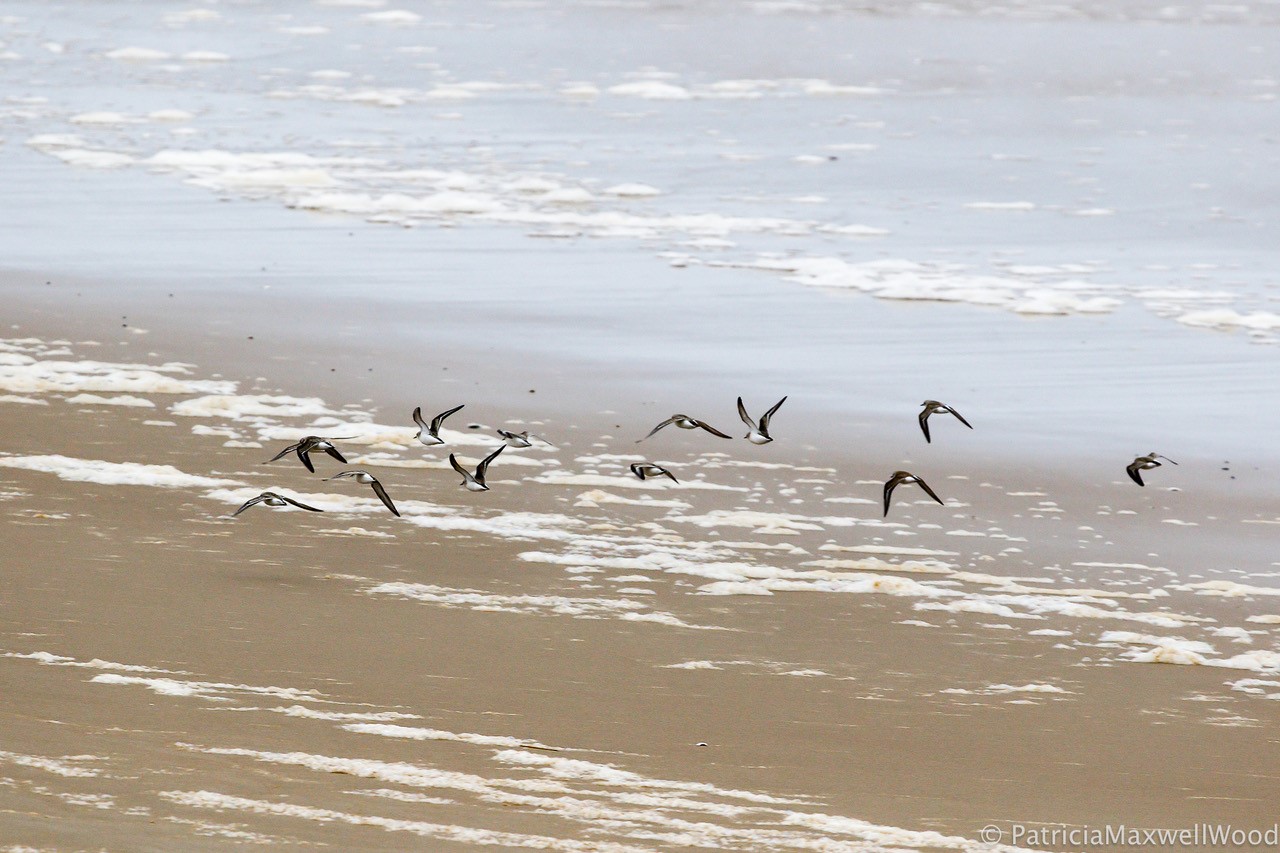
Sanderlings in flight – Patti Wood
As we had seen lots of egrets in the marsh near Stage Island, we tried going up on the hill there, to get a better look. As we approached, an immature Black-crowned Night-Heron took off. About 75 Great Egrets and 40 Snowy Egrets were lounging in the marsh, doing nothing but preening, which elicited comparisons to the US Congress. Hundreds of migrating Double-crested Cormorants either roosted on the marsh or worked in huge rafts of cooperative feeders. Little flocks of shorebirds consisting mostly of Semipalmated Sandpipers and yellowlegs dashed around the marsh as if to find some place to rest and feed, since so much of the good habitat was covered by the tide or rainwater. One Short-billed Dowitcher joined some Greater Yellowlegs to spice things up a bit. A Northern Harrier went by. We were glad the mosquitos that have been so wicked out there lately were not in abundance.
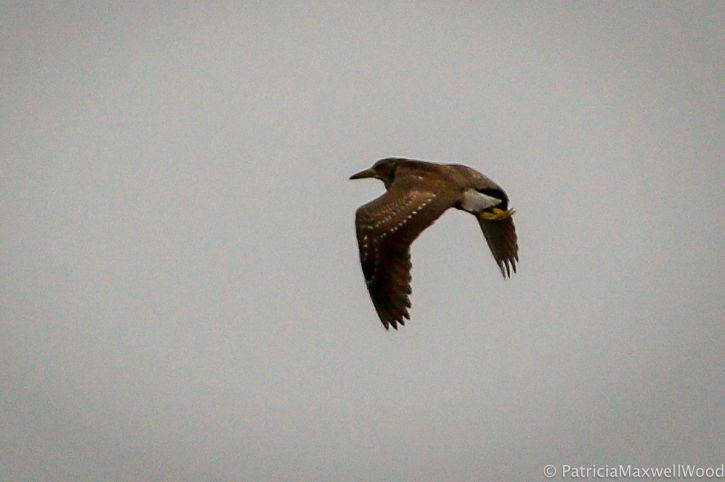
Juvenile Black-crowned Night-Heron – Patti Wood
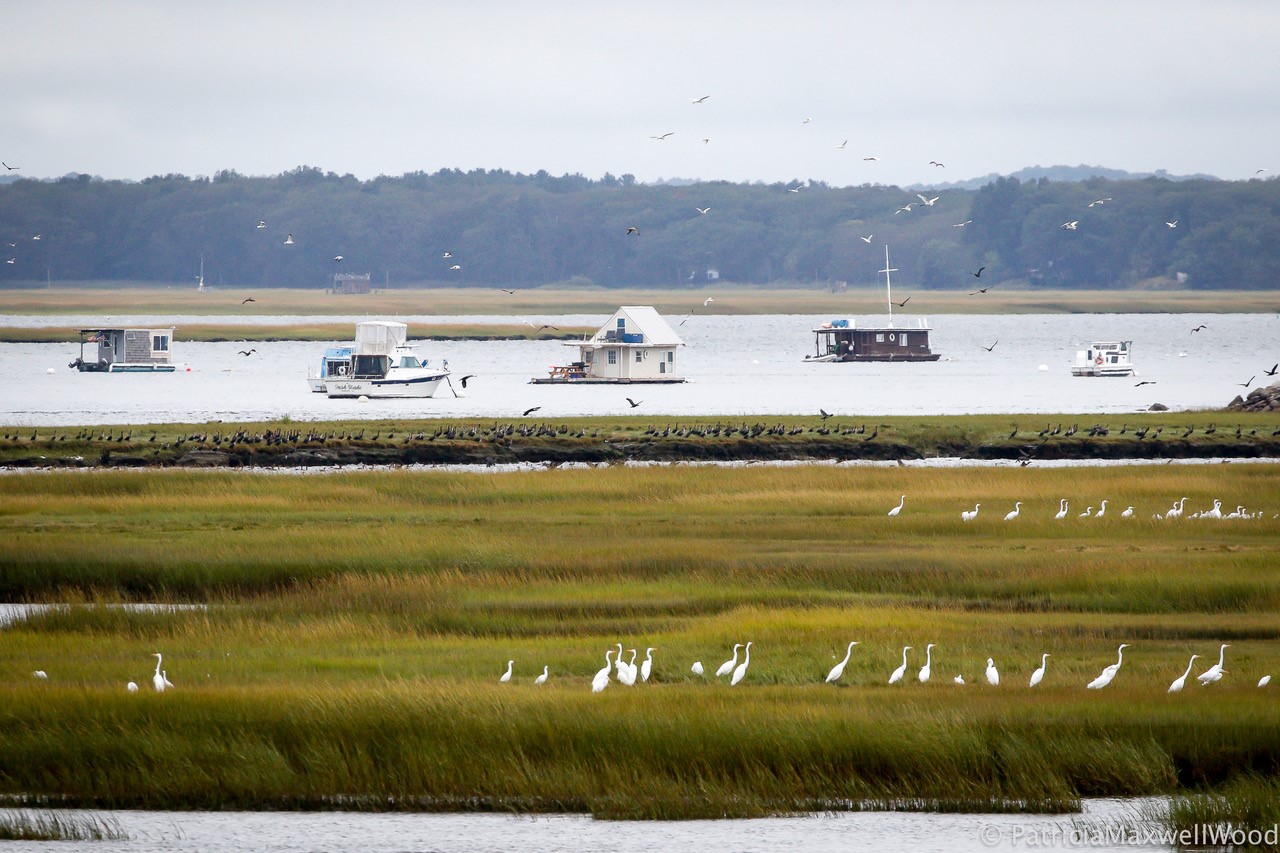
Egrets, Cormorants and Humans – Patti Wood
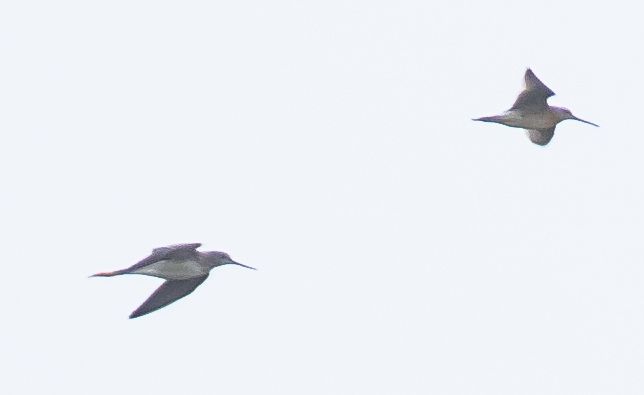
Short-Billed-Dowitcher vs. Greater Yellowlegs in flight – Mike Densmore
We decided that Sandy Point might be a somewhat birdless slog, so we hoped for the best with a stop at North Pool Overlook. There was very little there, though an Eastern Phoebe, a Red-Breasted Nuthatch, and a Gray Catbird kept us from total dejection. Still, you get the picture that this was not our birdiest WMB, and we moved on to think about the metaphysical reality that these times with fewer birds balance out the more exciting outings like last week’s WMB (when I happened to be away…). But it’s time for the fall migration of passerines to pick up, and even if this week was not that moment, we have faith it will come!
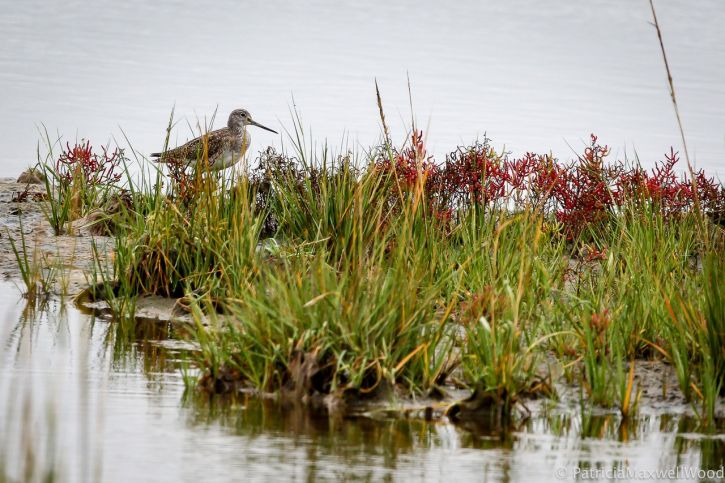
Greater Yellowlegs with fall Pickleweed – Patti Wood
Our list:
Canada Goose (~ 40) – Stage Island Pool (SIP).
American Black Duck (~ 30) – s. end, Bill Forward Pool (BFP).
Mallard – many; mostly s. end, BFP.
Northern Pintail (4) – s. end, BFP.
Green-winged Teal (~ 40) – s. end, BFP.
Double-crested Cormorant (~ 600+) – mostly in marsh north of SIP; several small flocks migrating.
Great Blue Heron (~ 15) – marsh n. SIP.
Great Egret (~ 75) – marsh n. SIP.
Snowy Egret (~ 40) – marsh n. SIP.
Black-crowned Night-Heron (1) – juvenile, flushed from shrubs across from SIP control structure.
Turkey Vulture (8) – over Bar Head.
Northern Harrier (1) – moving south over marsh n. SIP.
Semipalmated Plover (6) – parking lot #7 (seven) beach.
Greater Yellowlegs (~ 30) – various, including several small flocks overhead.
Lesser Yellowlegs (~ 10) – various.
Sanderling (~ 10) – seven beach.
Semipalmated Sandpiper (~ 30) – various.
Short-billed Dowitcher (1) – in small flock of G. Yellowlegs over marsh n. SIP.
Ring-billed Gull (~ 25) – mostly seven beach.
Herring Gull – many; mostly seven beach.
Great Black-backed Gull (~ 12) -seven beach.
Ruby-throated Hummingbird (1) – overhead; S-curves.
Belted Kingfisher (1) – The Wardens.
Northern Flicker (3) – roadside; S-curves.
Peregrine Falcon (1) – ad. perched on BFP dike.
Eastern Phoebe (3) – various.
Blue Jay (3) – S-curves.
Red-breasted Nuthatch (1) – flyby North Pool Overlook.
Gray Catbird (1) – NPO.
Northern Mockingbird (5) – various.
European Starling
House Finch (4) – seven.
House Sparrow (1)


